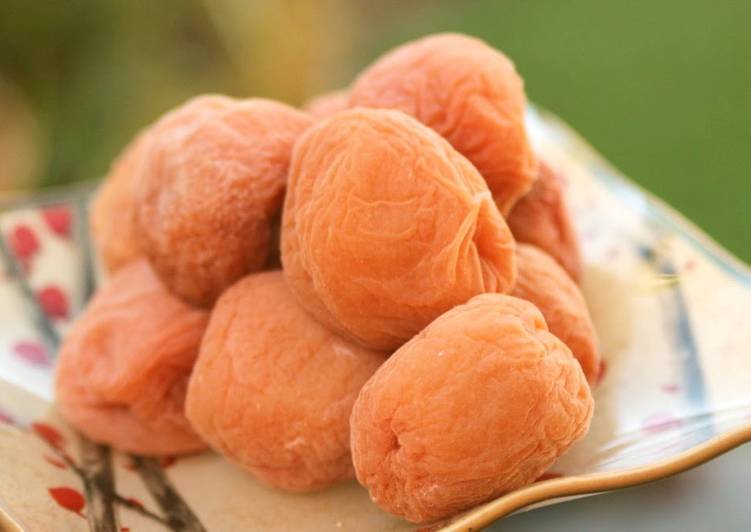Even Abroad! Not Umeboshi Pickled Plum, but Pickled Apricot. Mix the salt and citric acid. Carefully wash the apricots and dry well with a paper towel. Remove the stem with a toothpick.
 It is sour and salty pickled plum but it is said very good for healty.
Today, we will show you guys how to use this umeboshi in.
Not Umeboshi Pickled Plum, but Pickled Apricot Recipe by cookpad.japan.
You can have Even Abroad! Not Umeboshi Pickled Plum, but Pickled Apricot using 4 ingredients and 11 steps. Here is how you achieve that.
It is sour and salty pickled plum but it is said very good for healty.
Today, we will show you guys how to use this umeboshi in.
Not Umeboshi Pickled Plum, but Pickled Apricot Recipe by cookpad.japan.
You can have Even Abroad! Not Umeboshi Pickled Plum, but Pickled Apricot using 4 ingredients and 11 steps. Here is how you achieve that.
Ingredients of Even Abroad! Not Umeboshi Pickled Plum, but Pickled Apricot
- You need 1 kg of Apricots.
- It's 180 grams of Salt (18% of the apricots).
- You need 30 grams of Citric Acid (3% of the apricots).
- You need 1 of Vodka.
Not Umeboshi Pickled Plum, but Pickled Apricot. Japanese ingredients are hard to find when living overseas. Even if they are available they are usually expensive or not from Japan etc. The umeboshi pickled plum brings a myriad of health benefits to offset hangovers, sugar crashes, blood acidity, digestive disorders and even food poisoning. "Umeboshi" translated in English as, "Japanese salt plums" is actually related to the apricot.
Even Abroad! Not Umeboshi Pickled Plum, but Pickled Apricot instructions
- Mix the salt and citric acid.
- Carefully wash the apricots and dry well with a paper towel. Remove the stem with a toothpick..
- Wipe the apricots from Step 2 with a vodka-soaked paper towel. (This is to prevent mold from forming).
- Add Steps 1 and 3 alternatively to a sterilized bottle. (Sterilize the bottle by boiling and wiping with vodka.) Store as-is for a month in your pantry..
- During storage water will form so shake the bottle about one a day to spread the liquid. The picture shows two days after making. The volume has decreased..
- When they are well-pickled, put them outside to dry them out. On the first day they will be prone to sticking to the net so turn them over soon..
- If you put the pickled apricots back into Step 5's bottle on the first evening after leaving them out, they will become soft, but if they have already softened you don't have to worry. You can take them inside..
- They will be done on the 2nd or 3rd day of drying out. Try not to get them wet with rain or other moisture. The picture of the basket in Step 6 or 9's bottle is fine. The salt will spread gradually..
- .
- I promptly used some in an onigiri rice ball. The color was slightly yellow but the flavor was like a tart, salty umeboshi pickled plum. They turned out well and mold-free..
- If you have red shiso, prime them by rubbing with salt to remove bitterness and add them to Step 5 when the liquid starts to form. The shiso-addition gave me a good result..
Key point: The body needs (slight) alkalinity. Umeboshi plum or more commonly known as Japanese plums or pickled plums, are not actually plums. I've been addicted to umeboshi (Japanese pickled plums) since I was a kid who didn't like much else, but I never thought to make my own until the pandemic-instigated It wasn't until a couple of years ago that I noticed fresh ume, which is a Prunus variety more closely related to apricot than plum, at. Umeboshi is sour pickled plum and has been eaten for over a thousand years in Japan. Ripened plums are marinaded with salt, sun-dried, and preserved for a couple of months to develop the flavor.